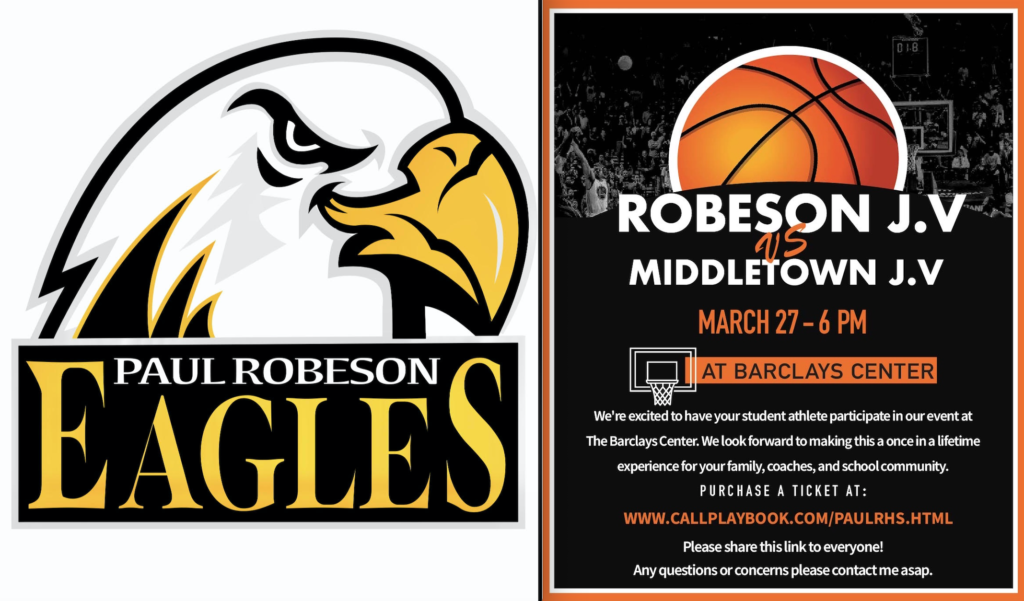
When Adriana Ferreira started at Pathways in Technology Early College High School in Crown Heights, Brooklyn in 2011 she was like most other freshmen on the first day. She was excited about the opportunities she knew P-Tech— a unique 9-14 model that gives students from low-income backgrounds both a high school diploma and a free college associates degree— could deliver.
“I thought I wanted to do something related to technology, but I wasn’t sure,” Ferreira said. “But I knew the opportunities they had for us were amazing, so I definitely wanted to stick by it at the time.”
Ninth graders starting at P-Tech get to pick one of two tracks: computer science or engineering. Ferreira picked computer science and got a job working as an assistant with P-Tech’s business manager. While she always was interested in the arts, she never thought it would become a part of her life at P-Tech.
“P-Tech wanted you to love what you were doing,” Ferreira said. “Despite me falling off with technology, they realized I had a passion for art and they allowed me to use that passion. So I created flyers for them, I would photograph for them, I even created a logo recently.”
Ferreira graduated high school in 2015 and decided not to pursue an associate’s degree in STEM, which is the goal for P-Tech students. And she isn’t the only one.
“The largest percentage of students are not ending with an associate’s degree,” said IBM Foundation President Emeritus and Duke University professor Stanley Litow who founded the P-Tech model. “They are going on to get their bachelor’s degree, most of them at public higher education institutions.”
P-Tech is a three-way partnership between the City of New York, P-Tech, CUNY, and its corporate partner IBM. Its ambitious new approach is aimed at closing the tech skills gap and providing low-income students an opportunity to gain both a high school diploma and a free associates degree in STEM.
Pursuing the associate’s degree after gaining the high school diploma is not required. 60% of P-Tech’s students graduate with the high school diploma and go on to take a college level course or professional certificate, according to Insideschools.org. Between 2014 and 2020, 144 students have earned a 2-year associate’s degree in STEM, according to the school’s founder, Principal Rashid Davis.
“A lot of kids didn’t want to graduate with the associate’s degree,” Ferreira said, “they realized tech wasn’t for them.”
Teachers at P-Tech say students’ interest outside of tech isn’t new. There have always been students interested in the arts at P-Tech.
Litow said that there is a misconception that P-Tech students have to pursue only tech careers. Marketing, communications, and human relations are common job options, he said. He also noted that some of the P-Tech corporate partnerships fall outside of the tech industry, such as P-Tech Healthcare at Dunbar High School in West Baltimore, where students graduate with a two-year associate’s degree in nursing.
“[P-Tech] is not one size fits all. It is not the end of a degree, it is not just technology jobs,” Litow said. “Some students want to be doctors, want to be teachers, want to be lawyers, but they all start off with this associate’s degree for free.”
Some students come in with an interest in technology, said Saunders, who teaches a workplace preparedness class to all freshmen at P-Tech, dedicated to opening younger high schoolers minds to the idea that they will be gaining a job in the near future. The class meets every morning during second period. Their exercises include writing prompts about what discrimination looks like and feels like in a workplace and how they can practice being inclusive with their peers. Their parents, he said, have done their research and have gotten them here.
“For the ones that already have a specific interest in technology they tend to accelerate more quickly because their parents can have different conversations with them as to why they are here and what they need to do once here,” Saunders said.
But Saunders said many kids don’t. “Many come in here and have no idea what they like,” Saunders said.
“It becomes our job as teachers, in particular 9th grade teachers, to help students understand how technology connects to what they are interested in.”
This year one of Saunders’s student loves to draw. She listens to class but keeps her head down and is drawing the whole time.
“It becomes my job to show her here is what graphic artists do and graphic designers do, what animators and illustrators do,” Saunders said. “And here is how technology is connected to that. Here is how you getting this STEM degree is going to help you to further what you already enjoy doing. And you can get paid for doing that.”
Tenth grader Wana Mariza chose P-Tech randomly but said, “I got lucky.” She is learning Photoshop and how to create 3-D art where they have learned how to make a 3-D avatar move.
Mariza grew up watching cartoons and wants to be an animator once she graduates from P-Tech. She’s not sure if she’ll pursue another degree after the free associate’s degree, or look directly for animator jobs.
English teacher Ms. Bonnie Strum has been at P-Tech since January 2016 and says the interest in English varies at a technology-focused school. Even though they are working towards an associate’s degree in STEM, students are required to take eight credit hours of English. That boils down to about one English class per year.
For students interested in English, Strum sometimes gears them towards journalism, which would include their technology skills. “But I’m not sure what else,” Strum said. “Maybe that is something we can work on.”
“When we can afford it, we try to have as many clubs happening after school as we can,” Vice Principal Mr. John said. “To give them a taste.”
Unfortunately, after budget cuts, clubs including the spoken word club, hip hop club, slam poetry club, and singing club got cut.
“The culture at P-Tech is different, it is unlike any other high school,” Ferreira said reflecting on how the teacher’s focus on getting a student a job—no matter in tech or not—plays a big role.
When Ferreira got an IBM technology internship the summer between her junior and senior year of high school she mostly worked on a website. But when her IBM manager noticed she was into art, they had a conversation.
“The way you talk about art, the way you express yourself, I can tell you are into art,” Ferreira remembers her manager saying. After that, Ferreira’s job completely changed. She got to meet with IBM team’s graphic designer and help out on their projects.
“Both P-Tech and IBM care about us a lot.”



